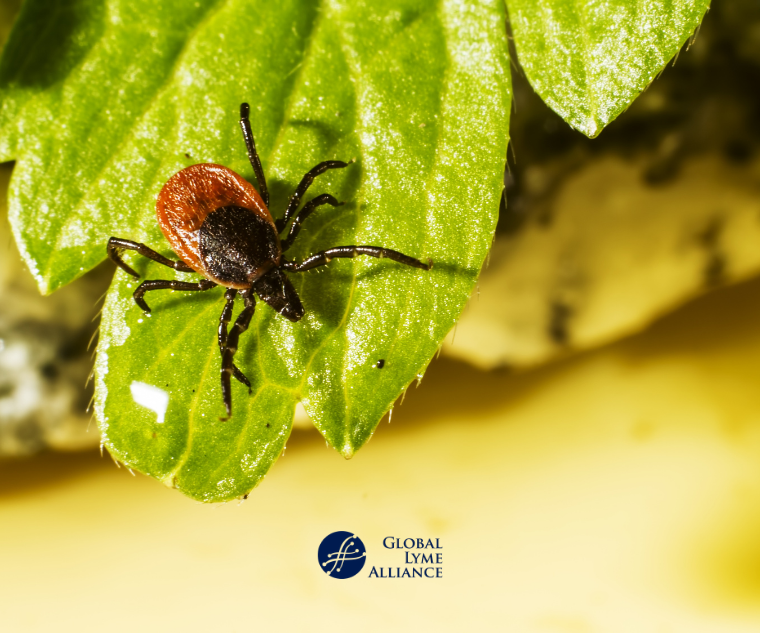
"The fact is, everyone should care about Lyme disease. Here are five reasons why."
May is Lyme Disease Awareness Month. Some people may think, “Oh, I already know about Lyme disease. You only have it if you see a bull’s eye rash." Or, “I don’t need to worry about Lyme disease, because I don’t live in New England.” These are myths about Lyme disease that are all too commonly heard. The fact is, everyone should care about Lyme disease.
Here are five reasons why:
- If you spend time outdoors, you are at risk.
Lyme disease used to be known for its prevalence in New England, as well as the fact that it is carried by deer. Both of those things are still true, but what people don’t always realize is that infected blacklegged ticks that carry Lyme disease are found across the country and world. Some ticks carry other diseases that are endemic to certain areas of the country, such as Heartland virus and Southern Tick-Associated Rash Illness (STARI). Moreover, in addition to deer, ticks also feed on other mammalian hosts such as mice, chipmunks, and birds. They don’t just live in the woods, either. They like to hide in tall grasses, leaf piles and on brush. Anyone who spends time outdoors is at risk for Lyme and other tick-borne diseases, and should take important precautions.
- Your children and pets are at high-risk for Lyme disease.
Do you have kids who like to play outside? Do you have pets who run through the woods? They are both at high-risk for contracting Lyme disease—and, your pets can bring ticks into your home, which can then infect you and your family. Children ages 3-14 are at the highest risk for Lyme disease, since they love to roll in the grass, explore in the woods, etc. Complications for both children and pets can be severe if Lyme is not detected and treated immediately. Like adults, children can develop cognitive issues, mood changes, sleep disturbances, and prolonged fatigue that can significantly impact their ability to focus in, or even attend, school. Here are specific prevention measures you can take for your kids and for your pets.
- If not treated early, Lyme disease can become seriously debilitating.
Most cases of Lyme disease that are treated immediately can be cleared up with a course of antibiotics, but some 10-20% of patients go on to experience persistent symptoms. And that’s for patients who are lucky enough to see a bull’s eye rash or whose doctor quickly recognizes their clinical symptoms. About 50% of people never see a bull’s eye rash, or any rash at all. Others present nebulous symptoms such as fatigue, or take months to develop other symptoms such as joint and muscle aches, fevers, and neurological impairments, which are often misdiagnosed; Lyme is considered “The Great Imitator” because its symptoms can mirror those of other conditions such as Multiple Sclerosis (MS) and Myalgic Encephalomyelitis/ Chronic Fatigue Syndrome (ME/CFS).
- Diagnosis and treatment can be complicated.
Lyme disease testing is notoriously faulty, since it only can detect antibodies against Borrelia burgdorferi (the pathogen that causes Lyme disease), not the bacteria itself. Many patients either get misdiagnosed, as described above, or not diagnosed at all. Their Lyme disease then progresses to later, more complex and systemic stages. It then becomes more difficult to treat. Treatment can also be complicated by co-infections that require different treatment—some doctors don’t know to test for co-infections in addition to Lyme disease—as well as an individual’s immune response. Each person's case of tick-borne illness is different, and requires an individually tailored protocol.
- Ticks DON'T ONLY carry Lyme disease.
As mentioned above, ticks can carry other illnesses, commonly referred to as co-infections. Some of these include babesiosis, anaplasmosis, ehrlichiosis, and possible bartonella. Some require different treatment than Lyme disease (for example, babesiosis is a parasite that is treated with anti-malarial medication). They also can be more difficult to get rid of, even when caught early. If you have Lyme disease and have not been tested for co-infections, you may only be fighting half the battle.
According to the Centers for Disease Control and Prevention (CDC), approximately 476,000 people are diagnosed and treated for Lyme disease every year. That’s more than breast cancer and HIV combined. Lyme and other tick-borne diseases are a serious health threat. The more people are aware of Lyme, the greater chance they’ll have of taking good preventative measures and/or getting accurately and efficiently diagnosed.
Click below to sign up for GLA's newsletter.
The above material is provided for information purposes only. The material (a) is not nor should be considered, or used as a substitute for, medical advice, diagnosis, or treatment, nor (b) does it necessarily represent endorsement by or an official position of Global Lyme Alliance, Inc. or any of its directors, officers, advisors or volunteers. Advice on the testing, treatment or care of an individual patient should be obtained through consultation with a physician who has examined that patient or is familiar with that patient’s medical history.

Jennifer Crystal
Writer
Opinions expressed by contributors are their own. Jennifer Crystal is a writer and educator in Boston. Her work has appeared in local and national publications including Harvard Health Publishing and The Boston Globe. As a GLA columnist for over six years, her work on GLA.org has received mention in publications such as The New Yorker, weatherchannel.com, CQ Researcher, and ProHealth.com. Jennifer is a patient advocate who has dealt with chronic illness, including Lyme and other tick-borne infections. Her memoir, One Tick Stopped the Clock, is forthcoming from Legacy Book Press in September 2024. Ten percent of proceeds from the book will go to Global Lyme Alliance. Contact her via email below.
